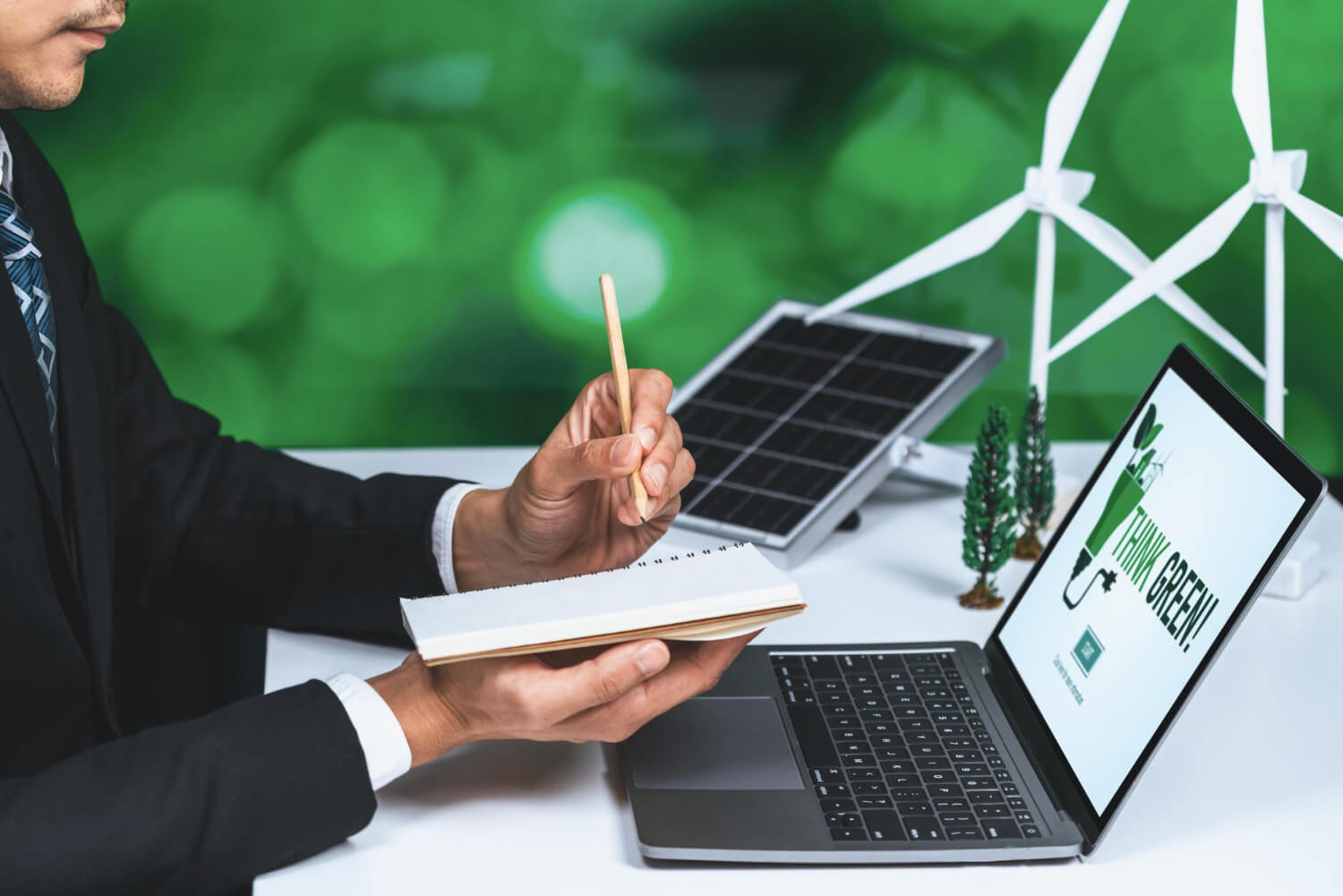In an era of increasing environmental awareness and regulatory pressures, the integration of green energy into modern business practices is no longer just a trend—it’s becoming a necessity. As we look towards the future, it’s clear that green energy will play a pivotal role in shaping the business landscape, driving innovation, and creating new opportunities for growth and sustainability.
The Current State of Green Energy in Business
Before we delve into the future, it’s important to understand where we stand today. Many businesses have already begun to incorporate green energy solutions into their operations:
- Solar panels on office buildings and warehouses
- Wind turbines powering manufacturing plants
- Geothermal systems for heating and cooling
- Electric vehicle fleets for transportation and delivery
These initiatives are not just about reducing carbon footprints; they’re also about cutting costs and improving efficiency in the long run.
Emerging Technologies Shaping the Future
1. Advanced Energy Storage
One of the biggest challenges in renewable energy has been its intermittent nature. However, breakthroughs in energy storage technologies are set to revolutionize how businesses can utilize green energy:
- Next-generation batteries with higher capacity and longer lifespans
- Hydrogen fuel cells for large-scale energy storage
- Thermal energy storage systems for industrial applications
These advancements will allow businesses to rely more heavily on renewable sources, even when the sun isn’t shining or the wind isn’t blowing.
2. Smart Grids and AI Integration
The future of green energy in business will be closely tied to the development of smart grids:
- AI-powered systems optimizing energy distribution and consumption
- Real-time energy trading between businesses and the grid
- Predictive maintenance reducing downtime and improving efficiency
Smart grids will enable businesses to not only consume green energy more efficiently but also to become active participants in the energy market.
3. Building-Integrated Photovoltaics (BIPV)
As solar technology advances, we’ll see more businesses incorporating solar cells directly into building materials:
- Solar windows that generate electricity
- Roofing tiles with built-in photovoltaic cells
- Facades that double as solar panels
This integration will make green energy production a seamless part of business infrastructure.
The Economic Imperative

The shift towards green energy in business isn’t just about environmental responsibility—it’s increasingly becoming an economic necessity:
Cost Savings
As renewable technologies mature, the cost of green energy continues to decrease. Many businesses are finding that investing in renewable energy sources can lead to significant long-term savings on energy costs.
Competitive Advantage
Consumers are becoming more environmentally conscious, and businesses that embrace green energy are likely to gain a competitive edge. This can translate into:
- Improved brand image and customer loyalty
- Access to new markets and customer segments
- Potential for premium pricing on eco-friendly products and services
Regulatory Compliance and Incentives
Governments worldwide are implementing stricter environmental regulations and offering incentives for businesses that adopt green energy solutions:
- Tax credits for renewable energy investments
- Grants and subsidies for green technology adoption
- Carbon pricing mechanisms that favor low-emission businesses
Forward-thinking companies are positioning themselves to benefit from these policies rather than being caught off guard by new regulations.
Challenges and Opportunities
While the future of green energy in business is promising, it’s not without its challenges:
Infrastructure Overhaul
Many businesses will need to invest significantly in upgrading their infrastructure to accommodate new green energy technologies. This can be a substantial upfront cost, but one that pays dividends in the long run.
Skills Gap
As green technologies become more prevalent, there will be an increasing demand for workers with specialized skills in renewable energy systems. Businesses will need to invest in training and education to build a workforce capable of managing these new technologies.
Energy Security
Relying on decentralized renewable energy sources can potentially make businesses more resilient to grid failures or energy price fluctuations. However, it also requires careful planning and redundancy to ensure consistent energy supply.
The Road Ahead

The future of green energy in modern business is not just about adopting new technologies—it’s about fundamentally rethinking how businesses operate and create value. We can expect to see:
- Circular economy models that minimize waste and maximize resource efficiency
- Increased collaboration between businesses to create green energy ecosystems
- New business models centered around energy production and management
Conclusion
The integration of green energy into modern business practices is not just an environmental imperative—it’s a strategic necessity for long-term success. As technologies advance and economic incentives align, businesses that lead the charge in adopting green energy solutions will be well-positioned to thrive in the low-carbon economy of the future.
The transition won’t be without its challenges, but the potential rewards—both for individual businesses and for society as a whole—are immense. The future of green energy in modern business is bright, and it’s a future that promises innovation, sustainability, and prosperity for those willing to embrace it.




